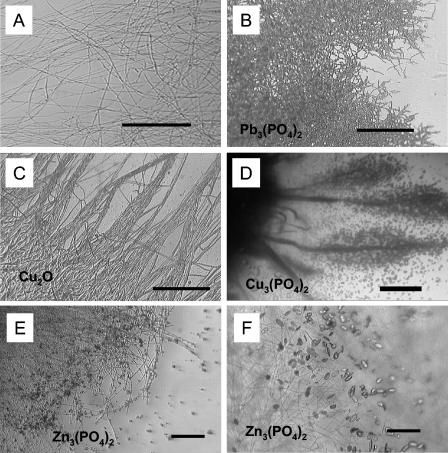FIG. 2.
(A to D) Morphological responses of marginal zones of B. caledonica colonies to toxic metal minerals after 3 weeks of growth at 25°C. (A) Loose control mycelium on mineral-free medium; (B and C) dense mycelium grown on media containing lead phosphate (B) and cuprite (C); (D) hyphal cords encrusted by copper oxalate hydrate crystals on medium containing copper phosphate. (A to C) Scale bars = 50 μm; (D) scale bar = 1,000 μm. (E and F) Light microscopic images of the transformation of zinc phosphate into zinc oxalate dihydrate by B. caledonica in liquid static culture. (E) Zinc phosphate particles adsorbed by the fungal mycelium after 7 days of growth at 25°C; (F) crystals of zinc oxalate dihydrate in the same mycelium after 10 days of growth at 25°C. Scale bars = 20 μm.

